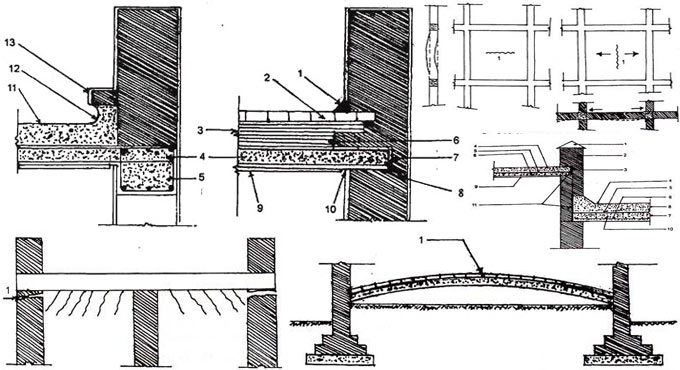
Various types of cracks in building walls
In this construction article, you will get detail information on the different types of cracks generally found in building walls.
Types of Cracks in Walls:
Type # 1. Horizontal Crack at the Junction of Roof Slab and Masonry Wall Support
i. Crack in load bearing wall: Because of the following factors, horizontal crack at the roof level of the uppermost floor, underneath the slab, may happen :-
a. The slab experiences alternative expansion and contraction because of fluctuation in ambient temperature.
b. Insufficient protective cover to get rid of heat on the roof.
c. Arrangement of large space of the slab in the interior of the room that leads to extreme deflection and containing insufficient vertical load over the support to withstand lift up of the slab at the support and movement of the slab is restricted on one side.
Thermal expansion of the slab inducting cracks may result in bending caused by thermal gradient in the slab. Under this situation, the cracks are visible from the outside, on top level of the slab; whereas it is visible at the bottom level of the slab from inside.
To take precaution, construction of the support of the R.C.C. on the masonry wall should be done as per the image given below.
Arrangement of L-beam with minimal reinforcement, combined with the slab would form inflexibility against deflection.
ii. Crack in non-load bearing wall ? Cladding and cross-walls of framed structure:
For framed structure roof slab, beams, and columns progress together which lead to diagonal cracks in walls normally parallel to the movement and horizontal cracks are situated under the beams. Stretch of movement in a framed structure is reasonably less as columns due to their stiffness and capability to resist bending stresses. So, the movement is controlled to some extent.
Both in load-bearing and framed structures, arrangement of sufficient or preventive cover on the roof is very crucial to get rid of cracks in walls.
Type # 2. Vertical Cracks at Junction of R.C.C. Column and Wall Masonry:
The cracks are noticeable few months once the construction is completed. This happens because of differential strain among R.C.C. and masonry as well as elastic deformation, shrinkage and creep in R.C.C. column.
For precaution, arrange butterfly ties at the junctions.
To get more information on other types of cracks, go through the following construction article yourarticlelibrary.com


